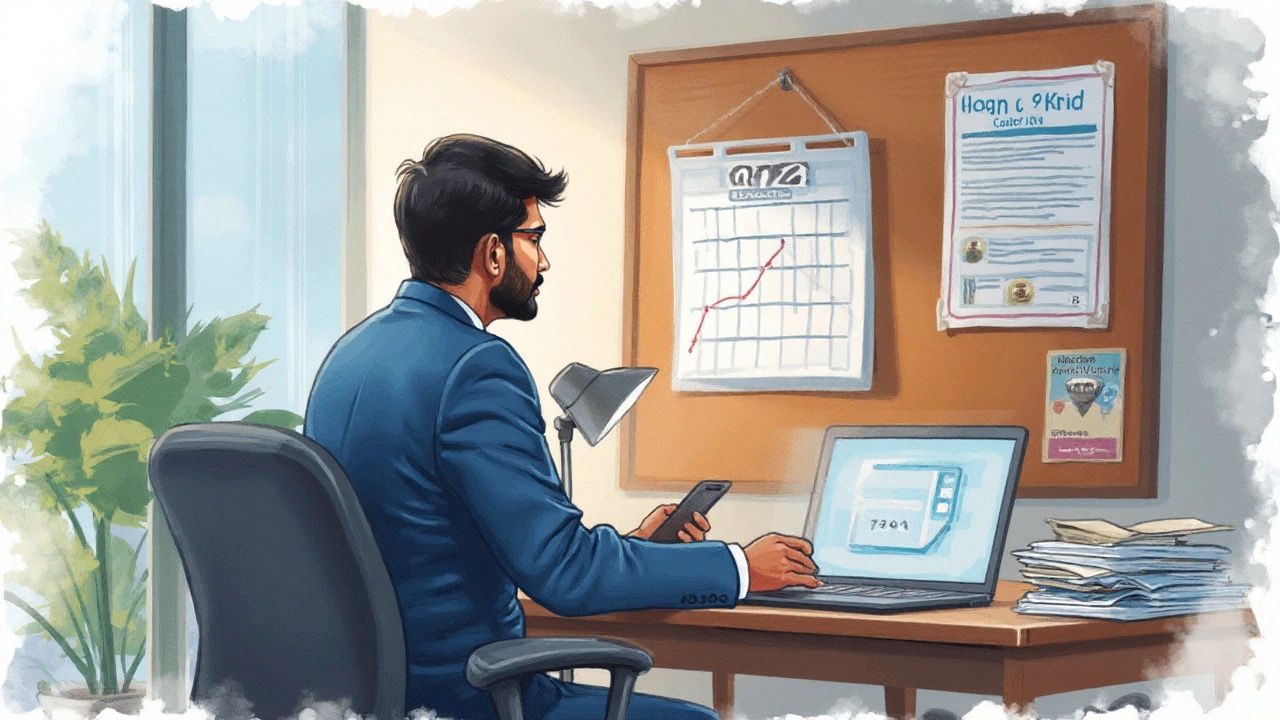
So, you finished the annual tax scramble. Now comes the big question buzzing in everyone’s head: IRS refund 2024—when exactly will those dollars make it to your bank? Weirdly, everyone thinks refunds just show up all at once, but that’s not how it works. Your refund can arrive early, late, or right on time depending on everything from when you file to what credits you claim. It’s almost like waiting on a package, but the tracking code is the IRS, and the delivery window? That’s a moving target.
How the IRS Processes Refunds in 2024
The IRS isn’t tossing checks out in some random order. When you click “submit” on your tax return, it kicks off a pretty involved process. It usually starts with your electronic return sliding into their system, where computers do a first check for any glaring errors. There’s a reason people lean toward e-filing and direct deposit—it’s faster because things don’t get stuck in the paperwork traffic.
This year, just like before, the IRS expects most e-filers with direct deposit to get their refunds in less than three weeks after their return is accepted (not just filed, but accepted). But there’s no “magic refund day” for everyone. Every single return goes through its own journey. If you’re paper filing, you’re looking at a slower route. Things grind down, especially after the pandemic made the IRS backlog look like a mountain. As of late July 2024, millions of returns still hit the IRS every week, but each one is time-stamped and added to a queue. Early birds don’t always get the worm, either—if you file too soon, software updates or IRS system checks can cause hiccups.
Here’s what you can expect this year:
- E-filing with direct deposit = fastest
- E-filing with a check = a few extra days
- Paper filing = the slowest, can be six weeks or more
And if there’s a glitch—like a mismatch on your info, running afoul of anti-fraud filters, or filing for certain credits (Earned Income Tax Credit and Child Tax Credit are known for it)—that three-week promise goes out the window. Some cases wind up needing manual review, stretching things for months. But most folks? Three weeks is solid for e-filers with direct deposit.
The 2024 IRS Refund Deposit Schedule: Real Dates and Data
No one likes vague estimates. Here’s what’s actually happening. The IRS doesn’t publish a big master calendar of every single deposit—they run on cycles, dropping batches of refunds about once each week. Friday is prime deposit day, but you might see your cash hit any day, depending on your bank.
| If the IRS Accepts Your Return | Estimated Direct Deposit Date |
|---|---|
| Jan 29 - Feb 4, 2024 | Feb 10 - Feb 17, 2024 |
| Feb 5 - Feb 11, 2024 | Feb 17 - Feb 24, 2024 |
| Feb 12 - Feb 18, 2024 | Feb 24 - Mar 2, 2024 |
| Feb 19 - Feb 25, 2024 | Mar 2 - Mar 9, 2024 |
| Feb 26 - Mar 3, 2024 | Mar 9 - Mar 16, 2024 |
| Mar 4 - Mar 10, 2024 | Mar 16 - Mar 23, 2024 |
| Filed after Mar 10, 2024 | About 21 days after return acceptance |
Now, the catch: If you claim the EITC or ACTC (earned income/child), the Protecting Americans from Tax Hikes Act (PATH Act) means the IRS waits until at least mid-February to send those refunds, so no money before Feb 15, 2024 for those claims. Add your bank’s own processing on top—some are lightning-quick, others crawl. Expect longer waits if your bank holds deposits or if your refund date falls on a holiday or weekend.
Why the weird lag between IRS approval and your actual refund? Even after the IRS releases the money, your bank needs time to process it, especially if there’s a crush of deposits nationwide. Direct deposit cuts red tape, but it’s not instant magic.

Why Some Refunds Take Longer: The Real Hold-Ups
If you’re tracking the IRS refund schedule and your date passes without a beep from your bank, don’t panic—there are reasons why refunds drag their feet. The most common holdup is simple mistakes: typos in your Social Security number, mismatched names, or forgetting to sign your return. Those all trigger review stops.
Another biggie: the filters. The IRS runs all returns through anti-fraud checks. If something on your return snags an alert—maybe your income looks wild compared to last year, or you suddenly claim a new dependent—the IRS puts a pause on your refund to double-check things. Sometimes they’ll ask for more info, and until you respond, it just sits.
Returns with Earned Income Tax Credit (EITC), Additional Child Tax Credit (ACTC), or other major credits always get extra scrutiny. If you get a letter (like the infamous 4464C or 4883C notices), reply as fast as you can—that’s often what resolves the limbo.
Paper return backlogs are still hanging around from the COVID crunch. The IRS hired thousands of new agents, but paperwork moves at human speed. If you mail your return or respond to a letter with mail, you’re in for a longer ride. About 15% of paper returns take over six weeks, even if there are no issues.
That said, the IRS’s “Where’s My Refund?” tool really helps. Updates happen daily, usually overnight. If you don’t see movement or you get strange messages, don’t freak out. Many times, it’ll update with your date a day or two before you actually get paid.
FAQ: Common IRS Refund Questions in 2024
- Why is direct deposit better? Direct deposit is way faster and less risky than waiting for a mailed check. The IRS says over 90% of refund recipients use it, and banks today are mostly reliable with deposits—just make sure your routing and account numbers are correct, or your refund could bounce.
- What about weekends and holidays? If your estimated deposit date lands on a weekend or federal holiday, your bank will process it the next business day. Valentine’s Day or President’s Day always slow things down.
- Can I speed up my refund? File early, double-check your details, choose e-file and direct deposit. If you claim EITC or ACTC, wait until mid-February (after the PATH Act hold). Stay on top of emails or IRS mail if they ask for documents.
- Does the IRS ever lose refunds? It’s rare, but sometimes checks get lost (especially with mailing snafus). If your refund goes sideways, call your bank and then the IRS. In some cases, a “trace” can be put on a lost deposit or check.
- Where do you check your refund status? The “Where’s My Refund?” tool on IRS.gov is updated overnight. You’ll need your SSN, filing status, and refund amount to check. Or you can use the IRS2Go app on your phone.
Also, don’t trust scam calls or emails claiming they’re from the IRS—they’ll never contact you about a refund by phone, text, or social media.

2024 Refund Tips: Getting Your Money Faster and Staying Out of Trouble
After seeing all the ways things go sideways, you definitely want to avoid common traps. The fastest way to get your IRS refund in 2024 is boring but works: File electronically, use direct deposit, and double-check every last number. For real, typos are the main reason returns end up under review—it’s not high-tech, it’s just human error.
File as soon as you have all your tax documents, but don’t rush if you’re missing something big like a W-2 or a 1099. Amended returns add months to your wait. If you move, update your address with the IRS right away. If you’re worried someone could try to steal your refund, you can get an IRS Identity Protection PIN (IP PIN)—it’s a special six-digit code you put on your return, and it stops most crooks cold.
- Set up alerts with your bank. That way you’ll know the instant your deposit arrives.
- Keep your tax paperwork organized in one folder for quick reference.
- Use the IRS2Go app for status updates. It beats refreshing your browser all day.
- Refuse to share tax info with third parties, no matter how convincing they sound. IRS never asks for banking info by phone or email.
- If you get a letter from the IRS (real ones only come by mail), answer fast. It means they need more info to finish your refund.
One last pro tip: make a habit of checking the IRS refund tracker early in the morning, before work. Updates roll out overnight, and sometimes you’ll get your actual deposit before the tracker says it’s sent.
So, if you’ve been wondering what date the IRS deposits refunds in 2024, just remember: there’s no single “magic day,” but most direct deposit refunds show up three weeks after return acceptance. Keep your info squeaky clean, use direct deposit, and pay attention to the IRS tracker. That money will show up—maybe dressed as Friday, maybe not—but it arrives well before you can say "tax season is finally over."







Write a comment